How to Make a DIY Carboard RC Plane (11-23)
I decided to add a personal touch by including the flag of my country, Spain, in a circle on the fuselage.
- Using a circular stencil or template, draw a circle where you want the flag to be.
- Paint the circle white and let it dry completely.
- Once the white paint is dry, use red and yellow paint to create the Spanish flag within the circle. Start with a yellow stripe in the middle, then add red stripes on the top and bottom.
- Allow the paint to dry completely before moving on to the next step.
Add Letters and Numbers:
- Use a fine-tip paintbrush or paint pens to add letters and the small black number to the fuselage. You might choose to add your initials, a specific word, or a serial number.
- Paint the letters and numbers carefully, ensuring they are evenly spaced and straight. Use masking tape as a guide if needed.
Detail Work:
- Add any additional details or touch-ups as necessary. This could include outlining the letters or adding shadows for a 3D effect.
- Ensure all paint is fully dry before handling the fuselage to avoid smudging.
Step 11: Painting the Wings
Now that your fuselage is painted, it's time to give the wings the same camouflage pattern. This ensures a cohesive and striking look for your RC plane.
Materials Needed
- Acrylic Paints: Green and brown military colors.
- Paintbrushes: Various sizes for different levels of detail.
- Palette or Mixing Tray: For mixing and holding paint.
- Water and Paper Towels: For cleaning brushes and managing excess paint.
- Masking Tape: For covering areas that should not be painted.
Steps to Paint the Wings:
Following the same process as the fuselage, start with one of the base colors (green or brown). Apply it in irregular shapes and patches across the surface of the wings.
- Allow this base layer to dry completely before adding the next color.
- Use a different brush to apply the second color in a similar irregular pattern. Vary the shapes and sizes of the patches to create a camouflage effect.
- Overlap some of the patches with the base color to blend the colors naturally.
Step 12: Adding Details - RAF Roundels (Wings)
To give your RC plane an authentic and stylish touch, you'll add RAF (Royal Air Force) roundels to each side of the wings. These roundels consist of concentric circles in white, blue, and red.
Materials Needed
- Acrylic Paints: White, blue, and red.
- Paintbrushes: Various sizes for different levels of detail.
- Circular Stencils or Templates: For creating precise circles.
- Pencil: For marking positions.
- Masking Tape: To help with clean edges.
Steps to Add the RAF Roundels:
- Prepare Your Work Area:
- Lay down newspapers or a protective sheet to keep your work area clean.
- Set out your paints, brushes, and water for cleaning brushes.
- Mark the Positions:
- Using a pencil and a circular stencil or template, lightly mark the positions for the roundels on each side of the wings. Ensure they are symmetrically placed for a balanced look.
- Mask the Areas:
- Use masking tape around the marked circles to help keep the edges clean and to prevent paint from spreading outside the designated areas.
- Paint the Outer Circle (Blue):
- Start with the outermost circle, which is blue. Use a brush suitable for the size of the circle and apply the blue paint carefully within the masked area.
- Allow the blue paint to dry completely before proceeding to the next color.
- Paint the Middle Circle (White):
- Next, paint the middle circle in white. Carefully align your stencil or template within the blue circle to maintain a clean edge. Apply the white paint and allow it to dry completely.
- Paint the Inner Circle (Red):
- Finally, paint the innermost circle in red. Again, use the stencil or template to ensure a precise edge and apply the red paint within the blue circle.
- Allow the red paint to dry completely.
- Remove the Masking Tape:
- Once all the paint has dried, carefully remove the masking tape to reveal clean and crisp edges around your RAF roundels.
Tips:
- Use Stencils or Templates: Using stencils or templates for each circle will help achieve clean and precise edges.
- Let Each Layer Dry: Ensure each layer of paint is fully dry before applying the next color to avoid smudging and blending.
- Work Carefully: Take your time with the details to ensure a polished and professional look.
Step 13: Preparing and Painting the Elevator and Rudder
To complete the camouflage look, we'll paint the elevator and rudder using the same color scheme as the fuselage and wings. I mix my own green and brown colors from primary colors to achieve the exact military tones I want. Before painting, we need to fit the elevator and rudder into the fuselage to ensure they fit correctly.
Materials Needed
- Acrylic Paints: Primary colors (red, blue, yellow), black, and white.
- Paintbrushes: Various sizes for different levels of detail.
- Palette or Mixing Tray: For mixing and holding paint.
- Water and Paper Towels: For cleaning brushes and managing excess paint.
- Masking Tape: For covering areas that should not be painted.
- Utility Knife: For making cuts in the cardboard.
- Hot Glue Gun: For securing parts.
Steps to Prepare and Paint the Elevator and Rudder:
- Prepare Your Work Area:
- Lay down newspapers or a protective sheet to keep your work area clean.
- Set out your paints, brushes, and water for cleaning brushes.
- Fit the Elevator and Rudder:
- Cut slots in the fuselage where the elevator and rudder will be inserted. Ensure these slots are well-aligned and correctly sized.
- Apply hot glue inside the slots in the fuselage to secure the elevator and rudder in place.
- Insert the rudder into the slot on the elevator and ensure it fits snugly. Make adjustments if necessary.
- Cut about 2 cm into the cardboard of the elevator and rudder to allow them to bend slightly. This will help them fit better and maintain the correct shape.
- Apply the Camouflage Pattern:
Step 14: Adding Wing Extensions
To improve the aerodynamics and stability of your RC plane, we will add pre-cut wing extensions to the tips of the wings. These extensions will enhance the overall performance of your aircraft.
Materials Needed
- Pre-Cut Cardboard Wing Extensions: These should be the same width as the wing tips.
- Hot Glue Gun (Silicone): For securing the extensions.
Steps to Add Wing Extensions:
- Prepare Your Work Area:
- Lay down newspapers or a protective sheet to keep your work area clean.
- Set out your pre-cut cardboard extensions and hot glue gun.
- Attach the Wing Extensions:
- Apply a generous amount of hot glue (silicone) to the edge of one wing tip where the extension will be attached.
- Press one of the pre-cut cardboard extensions onto the glued edge, ensuring it is aligned properly with the wing.
- Hold the extension in place for a few moments until the glue sets.
- Repeat the process on the other wing tip with the second extension.
- Secure the Extensions:
- Once the extensions are in place, apply additional hot glue along the seams where the extensions meet the wings to reinforce the bond.
- Allow the glue to dry completely before handling the wings.
Tips:
- Ensure Alignment: Make sure the extensions are properly aligned with the wings to maintain aerodynamic efficiency.
- Use Sufficient Glue: Apply enough glue to secure the extensions firmly, but avoid excessive amounts that might add unnecessary weight.
Step 15: Installing Control Horns and Servos
In this step, we'll attach the control horns to the control surfaces, install the servos, and connect them with a wire to ensure precise control of your RC plane.
Materials Needed
- Control Horns: For the elevator and rudder.
- Servos: Two for controlling the elevator and rudder.
- Wire: For connecting the servos to the control horns.
- Hot Glue Gun (Silicone): For securing the components.
- Pliers: For bending the wire.
- Utility Knife: For making cuts in the cardboard.
Steps to Install Control Horns and Servos:
- Attach Control Horns:
- Select the locations on the elevator and rudder where the control horns will be attached.
- Use a utility knife to make small slits in the cardboard at these locations.
- Insert the control horns into the slits and secure them with hot glue (silicone). Ensure they are firmly attached and aligned correctly.
- Prepare the Wire:
- Cut two pieces of wire to the appropriate length to connect the servos to the control horns.
- Using pliers, create a Z-bend at each end of the wire. To make a Z-bend:
- Hold the wire with the pliers and bend it at a 90° angle.
- Move the pliers slightly down the wire and bend it again at a 90° angle in the opposite direction.
- Repeat this process to create the second Z-bend at the other end of the wire.
- Install the Servos:
- Position the servos on the fuselage, close to the control surfaces but ensuring they do not face each other to avoid space constraints.
- Apply hot glue (silicone) to the bottom of each servo and press them onto the fuselage, nearly touching the floor.
- Allow the glue to set completely.
- Connect the Wire to the Servos and Control Horns:
- Insert one end of the wire into the hole on the servo arm.
- Insert the other end of the wire into the hole on the control horn.
- Ensure the wire runs in a straight line between the servo and the control horn to maintain proper alignment and avoid binding.
- Check Alignment and Movement:
- Move the servos manually to ensure the control surfaces respond correctly.
- Adjust the wire if necessary to ensure smooth movement without any obstructions.
Tips:
- Ensure Firm Attachment: Make sure the control horns and servos are securely glued to avoid any detachment during flight.
- Align the Wire: Proper alignment of the wire is crucial for smooth and precise control of the elevator and rudder.
Step 16: Building the Motor Mount Box
In this step, we will construct a small box out of cardboard to house the front motor. This box will provide a sturdy mount for the motor and help distribute the thrust evenly.
Materials Needed
- Cardboard: For building the motor mount box.
- Hot Glue Gun (Silicone): For assembling the box.
- Utility Knife: For cutting the cardboard.
- Ruler and Pencil: For measuring and marking.
- Bottle Cap: For reinforcing the motor mount.
Steps to Build the Motor Mount Box:
- Prepare Your Work Area:
- Lay down newspapers or a protective sheet to keep your work area clean.
- Set out your cardboard, hot glue gun, utility knife, ruler, and pencil.
- Cut the Cardboard Pieces:
- Measure and cut the following pieces of cardboard:
- One piece: 5.7 cm x 4.7 cm (floor)
- Two pieces: 5.7 cm x 5 cm (side walls)
- One piece: 4.7 cm x 5 cm (front wall)
- Use the ruler and pencil to mark the cutting lines on the cardboard, then cut out the pieces with a utility knife.
- Assemble the Box:
- Apply hot glue (silicone) along the edges of the floor piece (5.7 cm x 4.7 cm).
- Attach the side walls (5.7 cm x 5 cm) to the floor piece, ensuring they are perpendicular to the floor and aligned correctly.
- Apply hot glue to the edges of the front wall piece (4.7 cm x 5 cm) and attach it to the front of the box, completing three walls and a floor.
- Hold the pieces in place for a few moments until the glue sets.
- Reinforce the Motor Mount:
- Take a bottle cap and cut off the flat part using a utility knife or scissors.
- Apply a generous amount of hot glue to the flat part of the bottle cap.
- Attach the flat part of the bottle cap to the center of the front wall of the box. This will provide a sturdy base for mounting the motor.
- Add more hot glue around the edges of the bottle cap for additional reinforcement.
- Secure the Motor:
- Once the motor mount box is assembled and the glue has dried, position the motor against the bottle cap mount.
- Apply hot glue around the base of the motor to secure it firmly to the mount.
Step 17: Connecting ESC, Servos, and Motor to the Receiver
Now we are going to connect the ESC (Electronic Speed Controller), servos, and motor to the Flysky FS-IA6B receiver. This setup will allow you to control the aircraft's throttle and movements effectively.
Materials Needed
- Flysky FS-IA6B Receiver
- Electronic Speed Controller (ESC) with BEC (Battery Elimination Circuit)
- Servos: Two for controlling the elevator and rudder.
- Motor: Connected to the ESC.
- Battery: 3S (11.1V) 1500mAh LiPo battery.
- Charger: For charging the LiPo battery.
- Receiver Binding Plug: Optional, if required for binding.
Steps to Connect ESC, Servos, and Motor:
- Prepare Your Work Area:
- Ensure your RC plane is on a stable surface with enough room to work around it.
- Keep your transmitter (Flysky FS-i6) nearby but turned off for now.
- Connect the ESC to the Receiver:
- Locate the channel ports on your Flysky FS-IA6B receiver. Typically:
- Channel 2 (CH2): For one servo (elevator or aileron).
- Channel 3 (CH3): For ESC throttle control and BEC (Battery Elimination Circuit).
- Channel 4 (CH4): For another servo (rudder or aileron).
- Connect the Motor to the ESC:
- Ensure the motor wires from the ESC are securely connected to the motor.
- Double-check the polarity (typically marked with colors) to ensure correct connections.
- Power Up and Check Connections:
- Do not power up the system yet. Leave the LiPo battery disconnected.
- Before powering up, make sure all connections are secure and in their respective channels on the receiver.
- Charge the LiPo Battery:
- Connect your LiPo battery to the charger and set it to the correct settings for a 3S (11.1V) battery.
- Allow the battery to charge fully before proceeding to the next step.
Step 18: Binding the Transmitter to the Receiver
In this step, we will perform the binding process to establish communication between your Flysky FS-i6 transmitter and the FS-IA6B receiver. This is crucial for controlling your RC plane effectively.
Materials Needed
- Flysky FS-i6 Transmitter
- Flysky FS-IA6B Receiver
- Binding Plug: Small piece included with your receiver.
- Fully Charged 3S (11.1V) 1500mAh LiPo Battery
- ESC (Electronic Speed Controller) connected to the motor and receiver.
Steps to Bind the Transmitter to the Receiver:
- Prepare Your Equipment:
- Ensure the LiPo battery is fully charged and connected to the ESC.
- Place your RC plane on a stable surface with enough clearance around it.
- Locate the Binding Plug:
- Find the small binding plug included with your Flysky FS-IA6B receiver. It is usually labeled or marked for binding.
- Insert the Binding Plug:
- Insert the binding plug into the B/VCC pin slot on the FS-IA6B receiver. This is often located next to the channel ports.
- Power Up the System:
- Hold down the binding key on the FS-IA6B receiver (usually located near the channel ports).
- While holding the binding key, power on your transmitter (Flysky FS-i6) by pressing and holding the power button.
- Continue holding the binding key on the receiver until you see the LED on the receiver blink rapidly.
- Binding Process:
- Once the receiver's LED blinks rapidly, release the binding key.
- The LED on the receiver should then stay solid, indicating a successful bind with the transmitter.
- Power off both the transmitter and the receiver.
- Verify Binding:
- Power on your transmitter first by pressing the power button without holding it down.
- Then, power on the receiver by connecting the LiPo battery to the ESC.
- Check that the receiver's LED remains solid, indicating it is bound to the transmitter.
- Testing Controls:
- Move the control sticks on your transmitter and verify that the corresponding servos and control surfaces on your RC plane respond correctly.
Step 19: Securing Wings With Skewers and Rubber Bands
In this step, we will secure the wings to the fuselage of your RC plane using skewers and rubber bands. This method provides stability and ensures the wings remain securely attached during flight.
Materials Needed
- Skewers: Two long enough to span across the width of the fuselage.
- Rubber Bands: Several long rubber bands that can stretch across the fuselage.
- Utility Knife: For making cuts in the cardboard if needed.
- Pliers: For manipulating the rubber bands.
Steps to Secure Wings with Skewers and Rubber Bands:
- Prepare Your Work Area:
- Lay your RC plane on a stable surface with enough space to work around it.
- Keep the skewers and rubber bands easily accessible.
- Position the Skewers:
- Measure and mark where the skewers will be inserted through the fuselage to secure the wings.
- Use a utility knife to make small slits in the cardboard at these marked locations, if necessary.
- Insert the Skewers:
- Insert one skewer through the fuselage, aligning it across the width of the plane where the wings meet the fuselage.
- Repeat this process with the second skewer, ensuring they are parallel and evenly spaced.
- Secure with Rubber Bands:
- Take one rubber band and stretch it over one skewer, then across the fuselage to the opposite skewer.
- Repeat with additional rubber bands as needed, ensuring they are tightly stretched to hold the wings securely.
- Adjust and Test:
- Adjust the tension of the rubber bands to ensure they hold the wings firmly in place without causing deformation.
- Test the stability by gently moving the wings and checking for any movement or slack in the rubber bands.
Step 20: Decorating the Front Cabin and Preparing the Propeller
In this step, we will decorate the front cabin of your RC plane for aesthetic appeal, ensure all components are securely fastened inside the fuselage, and prepare the propeller for installation.
Materials Needed
- Decorative Cardboard or Paper: For decorating the front cabin.
- Hot Glue Gun (Silicone): For attaching the decorations.
- Utility Knife: For any trimming or adjustments.
- Propeller: Enroscada propeller.
- Propeller Adapter (if necessary): For mounting the propeller to the motor shaft.
- Propeller Spinner (if desired): Optional for aerodynamic purposes.
- Rubber Bands (if using for propeller attachment): Optional for securing the propeller.
Steps to Decorate the Front Cabin and Prepare the Propeller:
- Decorate the Front Cabin:
- Cut out decorative cardboard or paper to fit the front cabin area of your RC plane.
- Use a hot glue gun (silicone) to carefully attach the decorations to the cardboard or paper.
- Allow the glue to dry completely before proceeding.
- Secure Components Inside the Fuselage:
- Ensure all electronic components, including the receiver, ESC, servos, and battery, are securely fastened inside the fuselage.
- Use hot glue (silicone) to reinforce any loose connections or components to prevent movement during flight.
- Prepare the Propeller:
- Take the propeller and inspect it for any defects or damage.
- If necessary, attach a propeller adapter to the motor shaft according to the manufacturer's instructions.
- Carefully slide the propeller onto the motor shaft, ensuring it is securely seated.
- Attach the Propeller (if using rubber bands):
- Some propellers come with black rubber bands for attachment.
- Stretch the rubber bands over the propeller blades and hook them onto the motor mount or designated hooks for a secure fit.
- Ensure the propeller is balanced and rotates freely without obstruction.
- Check Clearance and Alignment:
- Verify that the propeller blades have adequate clearance from the fuselage and other components.
- Align the propeller so that it sits straight and does not wobble when spun.
Step 21: Final Adjustments and Setup
We need to make some necessary adjustments and setup procedures to ensure the RC plane is ready for flight. This includes configuring switches for safety, checking servo direction, and calibrating the ESC.
Materials Needed
- Flysky FS-i6 Transmitter
- RC Plane with all components installed
- Small screwdriver (if needed): For adjusting servo direction or ESC calibration.
Steps for Final Adjustments and Setup:
- Configure Safety Switch (if applicable):
- On your Flysky FS-i6 transmitter, set up a mix or switch (e.g., SWA) to control the main motor.
- This setup ensures that you need to activate the switch before the main motor can be powered, enhancing safety during pre-flight checks and setup.
- Check Servo Direction:
- Power on your transmitter and receiver system.
- Test each servo to ensure they move in the correct direction according to your control inputs.
- If a servo moves in the opposite direction, adjust it using the servo reverse function on your transmitter menu.
- Verify Motor Rotation:
- Install the propeller onto the motor shaft.
- Briefly activate the throttle control on your transmitter to spin the motor.
- Observe the direction in which the propeller pushes air.
- The propeller should push air towards the rear of the plane (forward thrust).
- If the propeller pushes air towards the front (reverse thrust), swap any two motor wires to correct the rotation direction.
- ESC Calibration:
- Ensure your LiPo battery is fully charged and connected to the ESC.
- Turn on your transmitter with the throttle stick at its maximum position.
- Power on the entire RC system (receiver and ESC).
- You will hear a series of beeps from the ESC.
- After the initial beeps, quickly move the throttle stick to its minimum position.
- Wait for a confirmation beep or LED indicator that the ESC is calibrated.
- Test the throttle control to ensure it smoothly increases and decreases the motor speed.
- Final Checks:
- Perform a range check to ensure reliable communication between the transmitter and receiver.
- Verify all control surfaces (elevator, rudder) respond correctly to transmitter inputs.
- Ensure the aircraft balances correctly and adjust as needed for proper center of gravity.
Safety Precautions:
- Propeller Safety: Always handle the propeller with care and avoid contact when the motor is powered.
- Battery Handling: Follow safety guidelines for handling and charging LiPo batteries to prevent accidents.
Ready for Flight:
With these final adjustments and setup procedures completed, your RC plane should be ready for its maiden flight. Conduct a thorough pre-flight checklist and ensure all systems are functioning correctly before taking off.
Step 22: Flight Preparations and Takeoff
In this final step, we will prepare for flight and safely launch your RC plane into the air.
Preparations Needed
- Wide Open Area: Find a spacious and clear area with minimal obstructions.
- Good Visibility: Ensure you have clear visibility of your plane at all times.
- Flight Battery: Fully charged LiPo battery installed in the plane.
- Transmitter: Powered on and ready for control.
- Safety Gear: Consider wearing gloves.
Steps for Flight Preparations and Takeoff:
- Choose a Suitable Flying Location:
- Select an open area, such as a large field or park, away from people, buildings, and other obstacles.
- Ensure the area is free from interference sources that could disrupt radio signals.
- Perform Pre-flight Checks:
- Double-check all control surfaces (ailerons, elevator, rudder) for proper movement and direction.
- Verify that the motor throttle responds smoothly to your transmitter controls.
- Ensure the aircraft's center of gravity is balanced correctly.
- Range Check:
- Perform a range check to confirm that your transmitter and receiver have a reliable signal at the flying location.
- Walk a safe distance away from the plane while continuously testing the control responses.
- Ready for Takeoff:
- Position your RC plane into the wind, if possible, for a smoother takeoff.
- Gradually increase throttle to start moving the plane forward.
- As the speed increases, gently pull back on the elevator control to lift the plane off the ground.
- Monitor the Flight:
- Once airborne, maintain a safe altitude and monitor the flight characteristics.
- Make minor adjustments to the controls as needed to stabilize the aircraft.
- Enjoy the Flight:
- Fly your RC plane within the visual line of sight and enjoy exploring its capabilities.
- Practice maneuvers and get comfortable with the controls.
Safety Considerations:
- Safety First: Always prioritize safety during flight operations. Be aware of your surroundings and potential hazards.
- Emergency Procedures: Know how to react in case of unexpected situations, such as loss of control or low battery.
Step 23: Happy Flying!
🚀 Wow, what an incredible journey it's been to create this DIY cardboard RC plane! 😊 I've had a blast throughout the process. Taking it step by step with patience was key, and I'm thrilled with how well it turned out. Flying it is incredibly fun, and this project has been so rewarding. I hope I've explained everything clearly enough to make it easy to follow, and I've loved sharing this instructable with the community!
I genuinely hope you enjoy building and flying your own cardboard creation as much as I have enjoyed making mine. The coolest part is being able to transform something as simple as a cardboard box into a functioning RC plane. That's the real gratification—turning an everyday item into something extraordinary! ✨
🛩️ While I must admit, I was a bit apprehensive about crashing it, the motto should always be fly, crash, repair, and above all, enjoy! 🌟
Now, I'm already thinking about designing landing gear for snowy conditions, like skis, so the innovation doesn't stop here! Let's keep pushing the boundaries! 🏔️
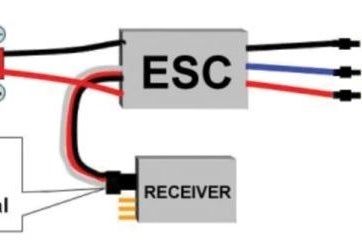
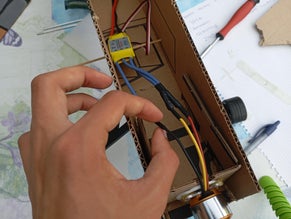
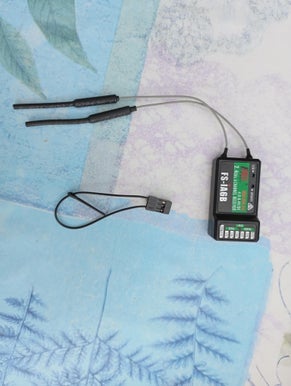


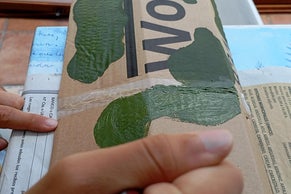
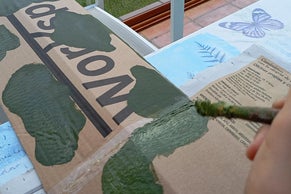

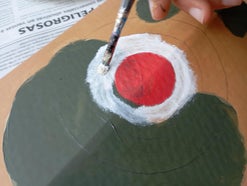
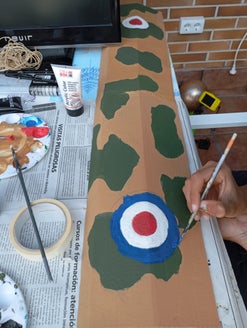
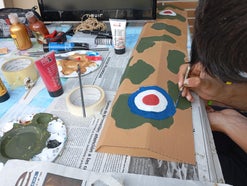
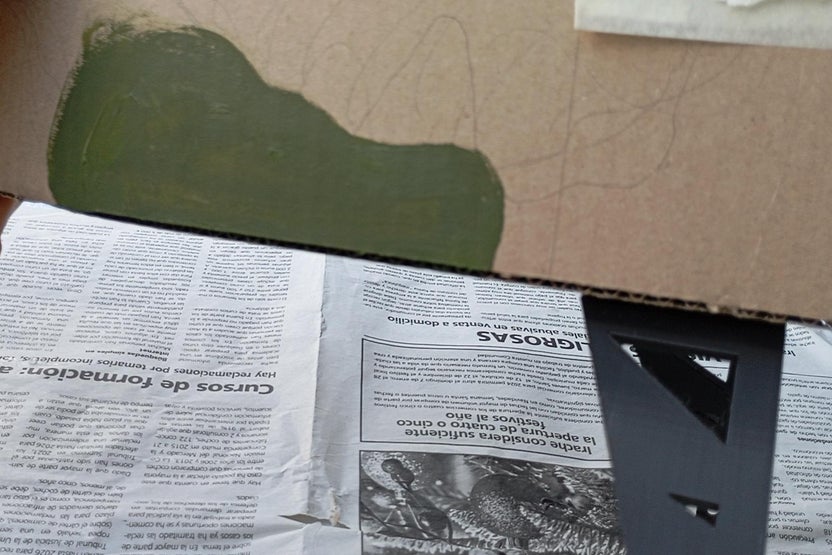
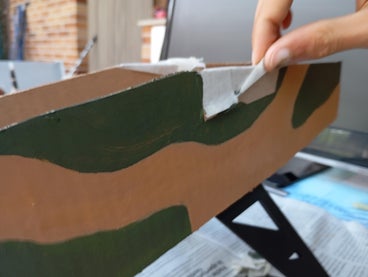
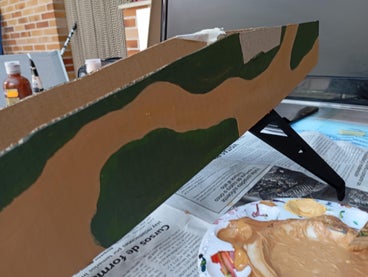
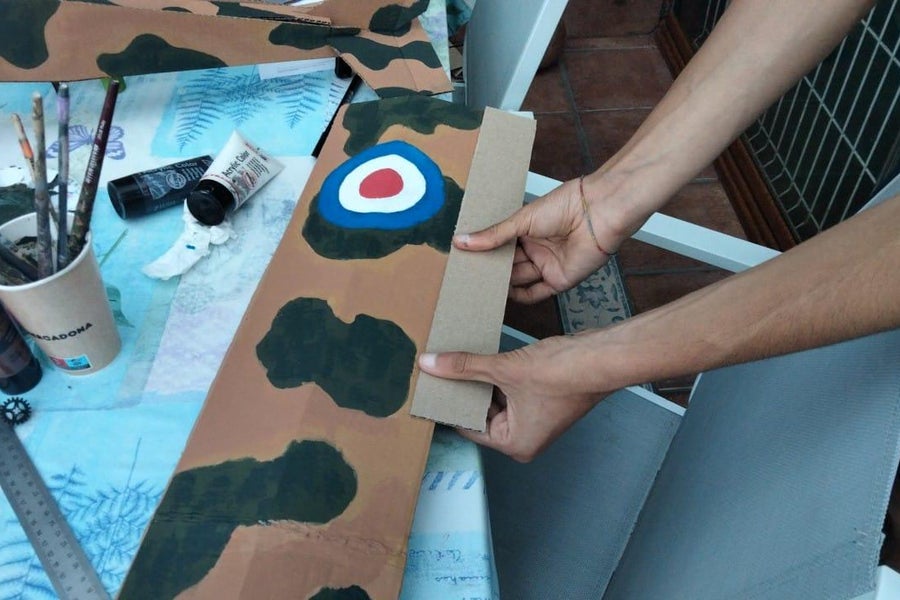
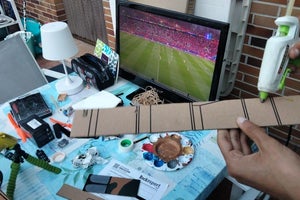

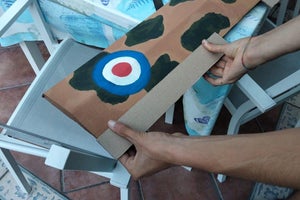
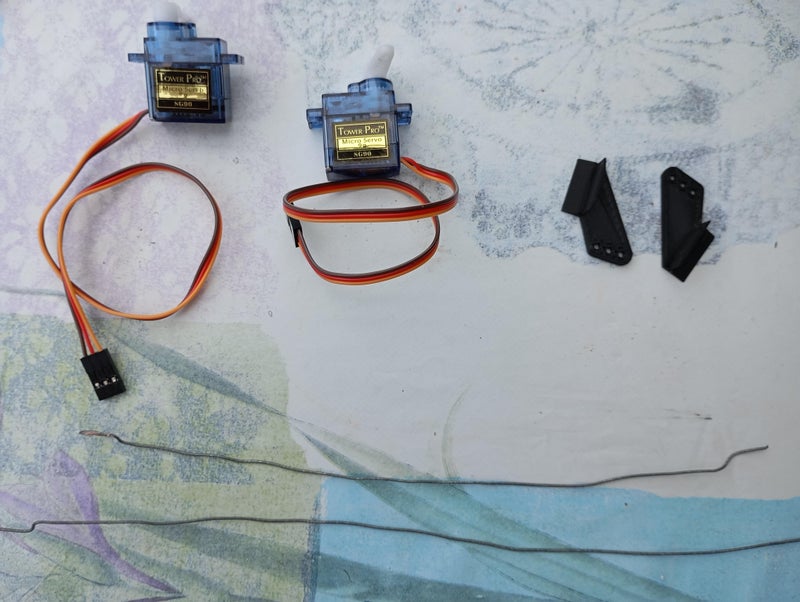
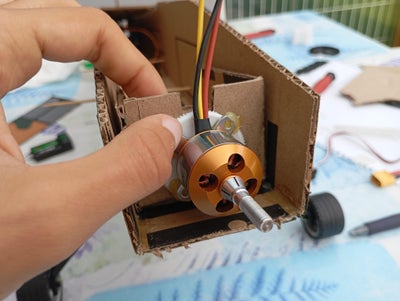
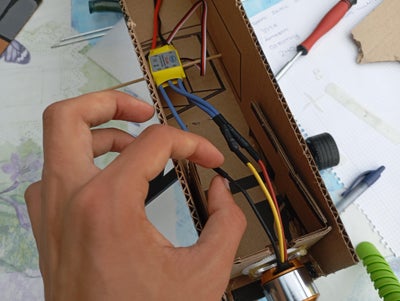
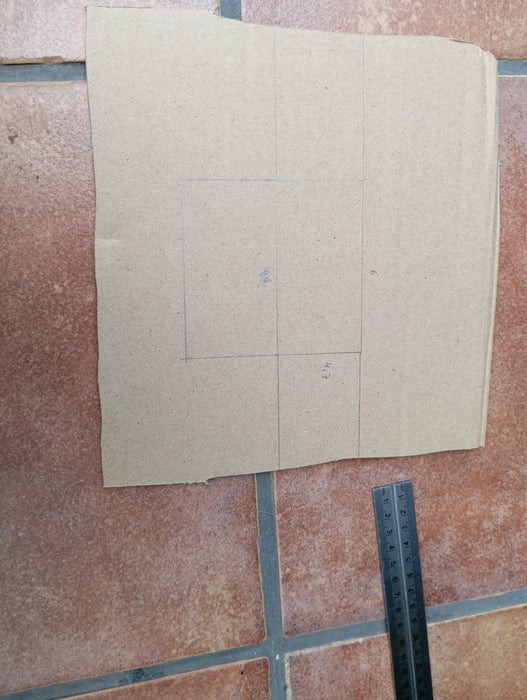


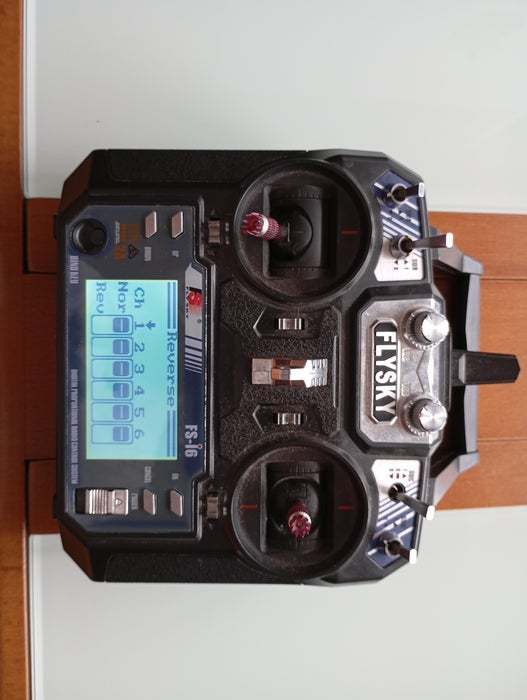

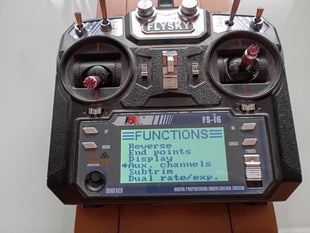
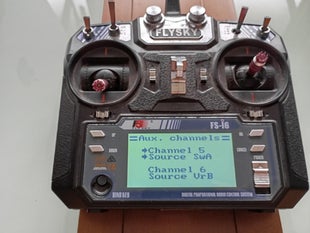
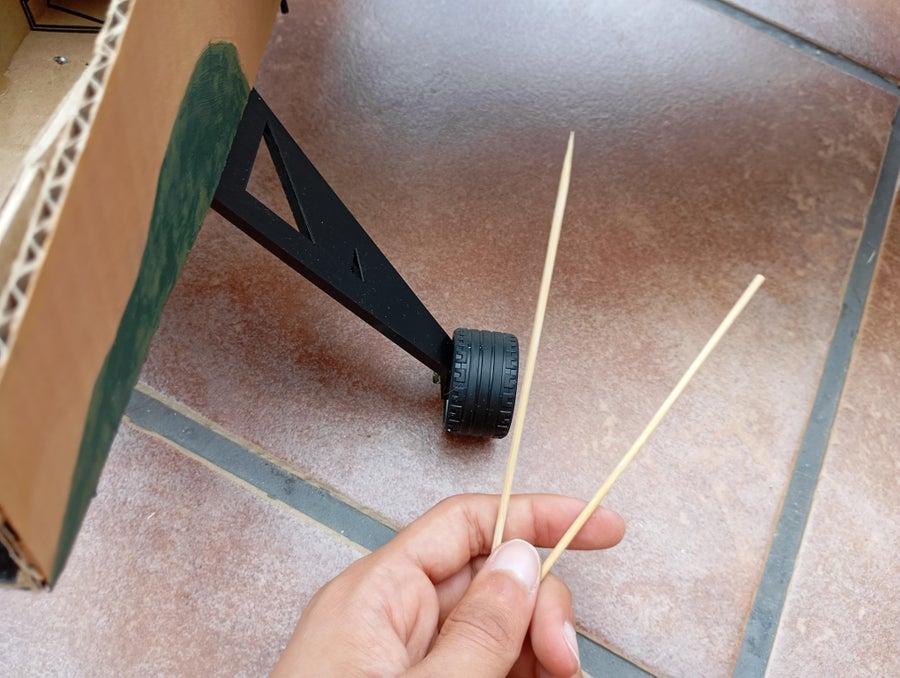

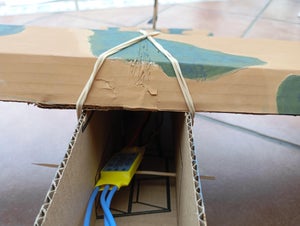
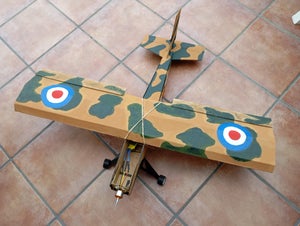
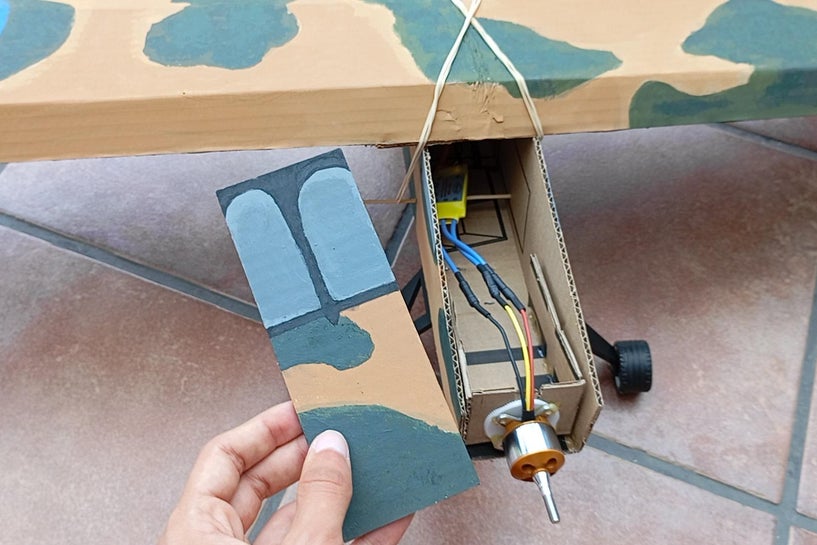

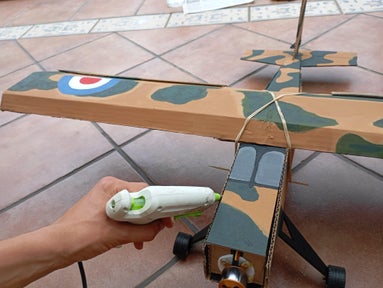
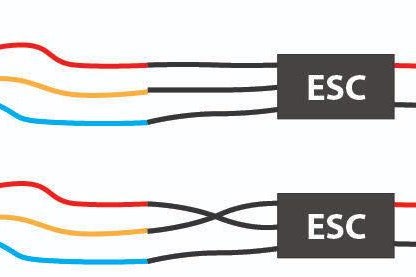

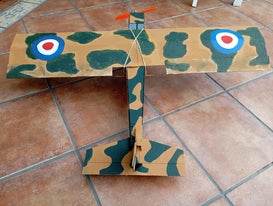
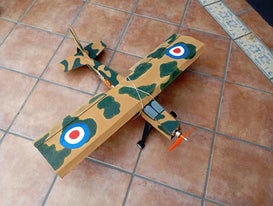
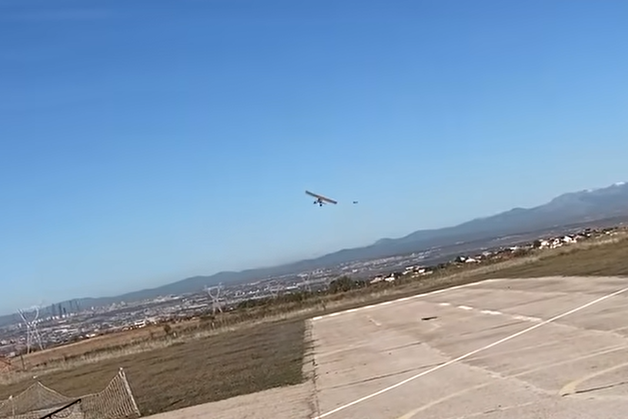
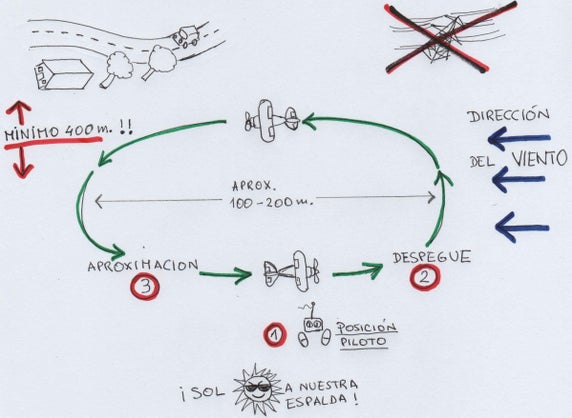

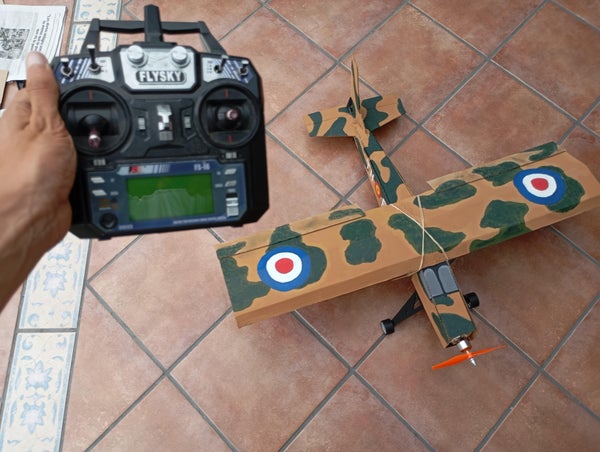
Comments
Post a Comment